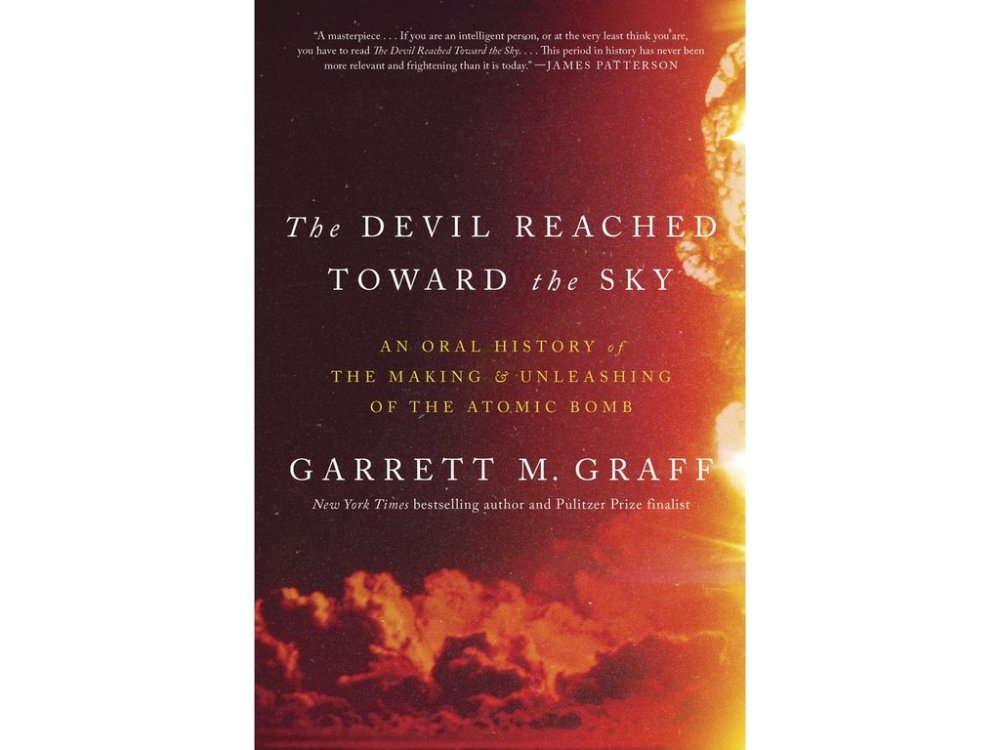Book Review: ‘The Devil Reached Toward the Sky’ weaves thorough account of Atomic Age’s start
Advertisement
Read this article for free:
or
Already have an account? Log in here »
To continue reading, please subscribe:
Monthly Digital Subscription
$1 per week for 24 weeks*
- Enjoy unlimited reading on winnipegfreepress.com
- Read the E-Edition, our digital replica newspaper
- Access News Break, our award-winning app
- Play interactive puzzles
*Billed as $4.00 plus GST every four weeks. After 24 weeks, price increases to the regular rate of $19.00 plus GST every four weeks. Offer available to new and qualified returning subscribers only. Cancel any time.
Monthly Digital Subscription
$4.75/week*
- Enjoy unlimited reading on winnipegfreepress.com
- Read the E-Edition, our digital replica newspaper
- Access News Break, our award-winning app
- Play interactive puzzles
*Billed as $19 plus GST every four weeks. Cancel any time.
To continue reading, please subscribe:
Add Winnipeg Free Press access to your Brandon Sun subscription for only
$1 for the first 4 weeks*
*$1 will be added to your next bill. After your 4 weeks access is complete your rate will increase by $0.00 a X percent off the regular rate.
Read unlimited articles for free today:
or
Already have an account? Log in here »
The story of the Atomic Age’s start is a fascinating one about the power of invention and a chilling one about its consequences. In “The Devil Reached Toward the Sky: An Oral History of the Making and Unleashing of the Atomic Bomb,” Garrett M. Graff skillfully tells both.
The power of Graff’s oral history is the diversity of voices he relies upon in crafting a comprehensive history of the atomic bomb’s inception, creation and use during World War II.
He creates a comprehensive account of a what seems like a well-told piece of history by including voices that have been either little-heard or missed altogether in the six decades since the atomic bombs were dropped on Hiroshima and Nagasaki.

Graff at the outset acknowledges his book is adding to a history that feels well-worn, from historian Richard Rhodes to filmmaker Christopher Nolan.
But Graff manages to stand up to even those accounts with voices that help the reader help see what it was like on the ground. It includes life at Los Alamos, New Mexico; Oak Ridge, Tennessee; and Hanford, Washington as scientists raced to develop the atomic bomb before Nazi Germany.
“The Devil Reached Toward the Sky” focuses not just on the voices of scientists like Robert Oppenheimer and Edward Teller. Graff also explores overlooked pieces of the Manhattan Project’s history, such as how segregation affected life at Oak Ridge.
But the most powerful portions come in the final chapters of the book, which focus on the bombing and the aftereffects of the bombing in Hiroshima and Nagasaki. No writer could describe better the hellscape that the bombs unleashed better than those on the ground who survived it.
“My God, what have we done?,” Capt. Robert A. Lewis, co-pilot of the Enola Gay, is quoted in the book as saying.
The voices Graff mines help begin to answer at least part of that question.
___
AP book reviews: https://apnews.com/hub/book-reviews


